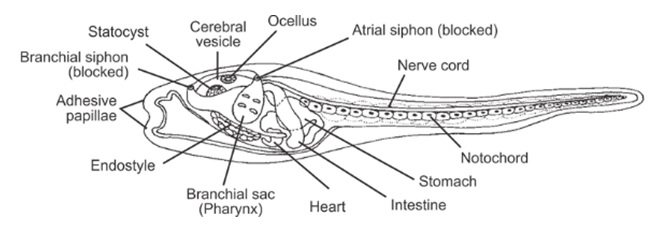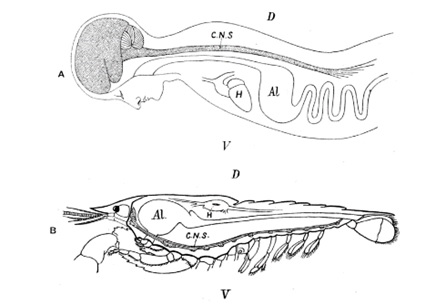Difference Between Protochordates and Euchordates
Table of Contents
Protochordates vs Euchordates
Protochordata and Euchordataare two major groups of Phylum Chordata; therefore, before learning the difference between Protochordata and Euchordata, let us first briefly discuss Chordata. Chordates are the most advance and probably the most well-known group of organisms in the entire animal Kingdom including humans. They are bilateral, deuterostomial eucoelomates. The most fundamental chordates characteristic features include the presence of dorsal hollow nerve cord, notochord and pharyngeal gill slits. These features are present in all the chordates at any stage of their life. The other advanced features that help for chordates to dominate over other Phyla are the presence of living endoskeleton, efficient respiration, efficient circulation, and centralized nervous system. There are three main sub-phyla found in the Phylum Chordata, namely; Urochordata, Cephalochordata and Vertebrata. Out of these three, the first two Subphyla are collectively called Protochordata, which includes lower/ primitive chordates. Vertebrates are classified as euchordates that includehigher chordates.
What are Protochordates?
Protochordates consists of the organisms that are categorized under Subphyla Urochordata and Cephalochordata. Protochordates are also called Acraniata, due to the lack of head and cranium. These organisms are extremely marine and have small sized bodies.

What are Euchordates?
Euchordates are higher chordates that include the animals of the Subphyla Vertebrata. Unlike protochordates, euchordates have prominent head and cranium, hence called Craniata. Subphyla Vertebrata is divided into two groups; (a) Agnatha, which includes the animals who lack true jaws and paired appendages and (b) Gnathostomata, which includes the vertebrates with true jaws and paired appendages.

What is the difference between Protochordates and Euchordates?
• Protochordates are also called Acraniata due to lack of head and cranium. Euchordates are called Craniata due to the presence of head and cranium.
• Protochordates are exclusively marine with small bodies, whereas euchordates are found in both aquatic and terrestrial habitats and have large-sized bodies.
• Euchordates have well-developed head and exoskeleton with 2 pairs of appendages. However, protochordates lack appendages and exoskeleton.
• Protochordates have enterocoelic coelom, whereas euchordates have schizocoelic coelom.
• Protochordates lack vertebral column, unlike euchordates.
• Unlike in protochordates, notochord is covered or replaced by a vertebral column in euchordates.
• Protochordates have pharynx with permanent gill clefts. Pharyngeal gill clefts of euchordates persist or disappear.
• Protochordates have chamber less hearts, but euchordates have hearts with chambers (2 to 4 chambers).
• In protochordates, kidneys contain protonephridia, whereas, in euchordates, kidneys contain meso- or metanephridia.
• Reproduction of protochordates is either sexual or asexual, whereas that of euchordates is always sexual.
• Gonoducts are usually absent in protochordates, whereas they are always present in euchordates.
• In euchordates, the development is indirect or direct, with or without a larval stage whereas, in protochordates, the development is indirect with a free-swimming larval stage.
Images Courtesy:
ncG1vNJzZmivp6x7pbXFn5yrnZ6YsqOx07CcnqZemLyue8OinZ%2Bdopq7pLGMm5ytr5Wau2680airqJuYpL%2BlrdOeqmaZnpl6t7%2BMnqycoJ%2BnsaLAxKxm